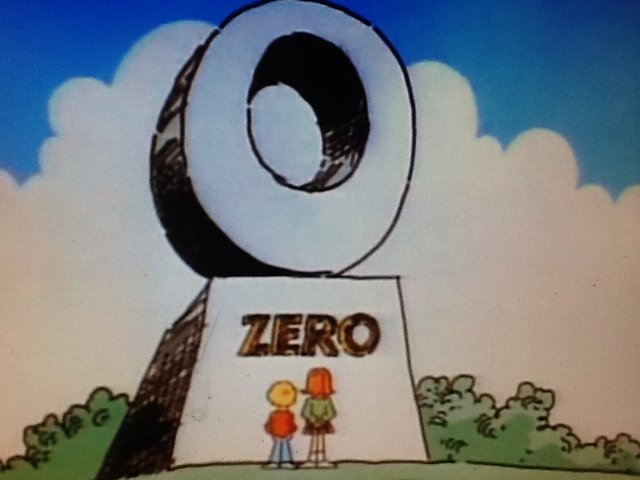Zero: A Lot More Than Nothing
It is an obvious fact. In the common vernacular the word "zero" is rarely involved in compliments.
"I'm not surprised he failed. You know Willie, he's a real zero".
"On Sunday the Jets have zero chance of winning".
"How can I support that candidate? I can't vote for someone with zero credibility".
It would appear that there is nothing good about zero. Of course, that is primarily because that is precisely what it represents—nothing. But in the right environment—the world of mathematics—zero is a rock star.
Starting with the fundamental attributes
Despite the burden of being used to literally represent nothing, in the context of many mathematical calculations ranging from Algebra 1 to Calculus, zero is a unique and powerful component for many of the most important tenets in the subject.
Because this role is so essential, one of the eight basic principles of mathematics is devoted to the special quality of zero.
The Rule of Zero: 0 x a = 0
The explanation of this principle in words would be that any number multiplied by zero results in a product of zero.
At first glance the importance of this relationship may be difficult to grasp. What could be so important about an answer of nothing? The significance lies in the exclusivity of obtaining that result of zero. That unique situation substantiates the following statement:
No two numbers can be multiplied together to create an answer of zero unless one or both of the numbers themselves are zero. If a x b = 0, then either a or b must be zero.
That concept is critical for math operations ranging from the simple to the complex. One example of applying the rule of zero is in solving quadratic equations (containing a squared term) by factoring.
Finding solutions the hard way
There are four basic methods for solving the equation x2 + 7 x + 10 = 20. One involves the quadratic formula which is a complicated series of letters and symbols involving multiplication, division and square roots. It is a very difficult to memorize and even more challenging to recreate.
Another method is called "completing the square" a technique that can be both tedious and heavy with fractions. Unless there is no alternative, scratch that one as well. A third approach, regrettably favored by many weak math students, is "trial and error", which is not really a method at all. It consists of substituting numbers (some would call this guessing) for "x" until one is found that will make the equation true. In the sample equation "3" could be tried as a potential answer. Replacing x with 3 gives 32 + 5 (3) + 10 which equals 9 + 15 + 10 or 34 not 20. Unfortunately all of that maneuvering effectively eliminates only one possible solution.
The next step would be to try another number which will probably fail (note: there are only two correct solutions) and then try again. This approach, which possesses a level of educational sophistication similar to counting on fingers, is slow and vastly inferior to the method utilizing the rule of zero.
Zero makes finding answers easy
A couple of explanations and disclaimers must be made at the outset. Factoring is the act of converting a value into two numbers that when multiplied together give the original value. One set of factors for 12 would be 3 and 4. Another would be 2 and 6. A form of factoring is central to solving many quadratic equations. It is usually a very easy, mechanical process that can be explained in a matter of twenty minutes or less. But that lesson will have to be saved for another day.
Today is all about zero. Disclaimer—the rule of zero can only be used for solving a quadratic equation with a non-zero side that is factorable. Fortunately many are.
Back to x2 + 7x + 10 = 20. In order to use the rule of zero there must, of course, be a zero. This is accomplished by subtracting 20 from both sides of the equation creating: x2 + 7x - 10 = 0. The expression x2 + 7x + 10 can be factored into (x - 2) (x - 5) and the equation becomes (x – 2) (x – 5) = 0.
Based on the rule of zero if (x - 2) (x - 5) = 0, then either (x - 2) or (x - 5) must equal 0. Suddenly all of the guesswork is gone. Obviously x must be equal to either 2 (2 - 2 = 0) or 5 (5 - 5 = 0). The problem is solved.
Consider the complications of this problem without the rule of zero. If the right hand side had remained 20 what two numbers multiplied together would work? There would be an unlimited group of possibilities.
Besides 1 x 20, 2 x 10 and 4 x 5, there would be all of the negative permutations (-1 x -20) and fractions (one half times 40) translating into thousands and thousands of other potential values.
Only a product of zero can give the precision of knowing one of the two multipliers must be a specific number namely zero.
Zero may mean nothing but for solving many quadratic equations it is a mighty big something.

I will upvote and resteem your last blog post to my 36,000+ followers for free if you reply to this comment. Follow @a-0-0